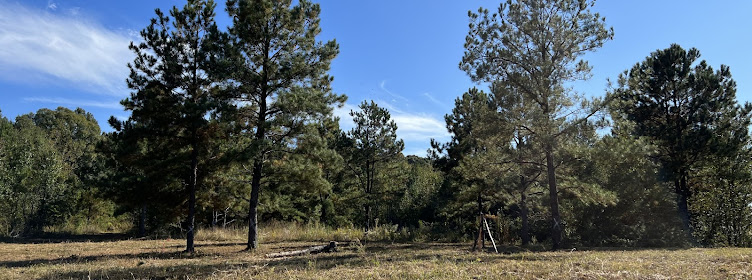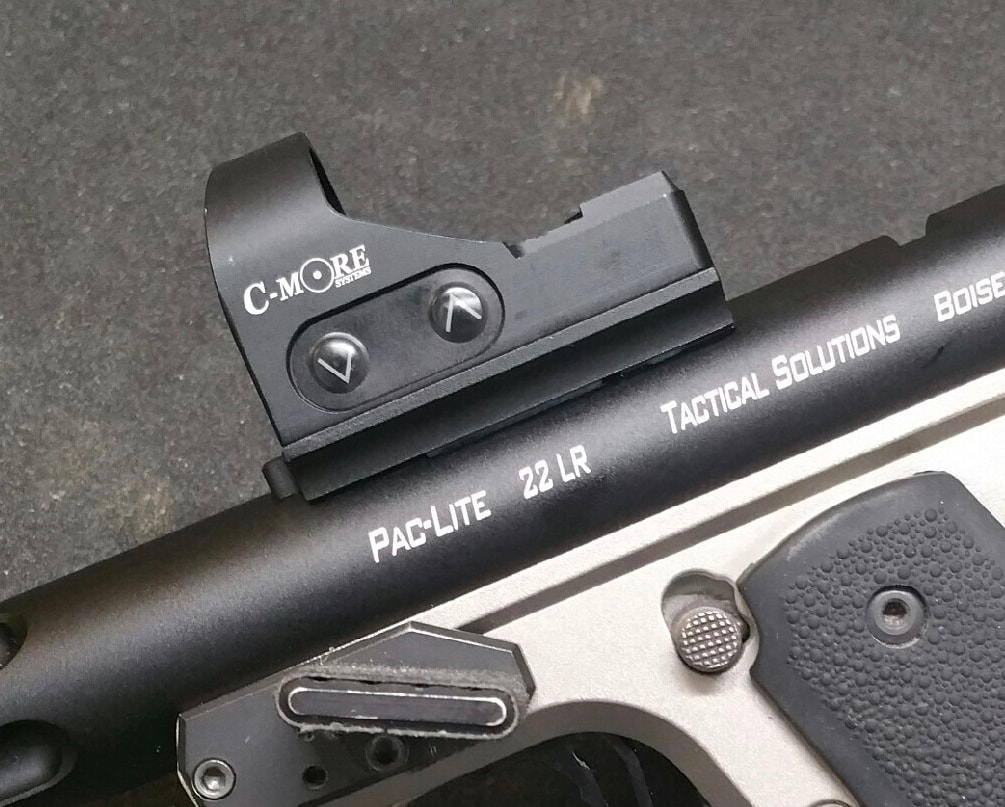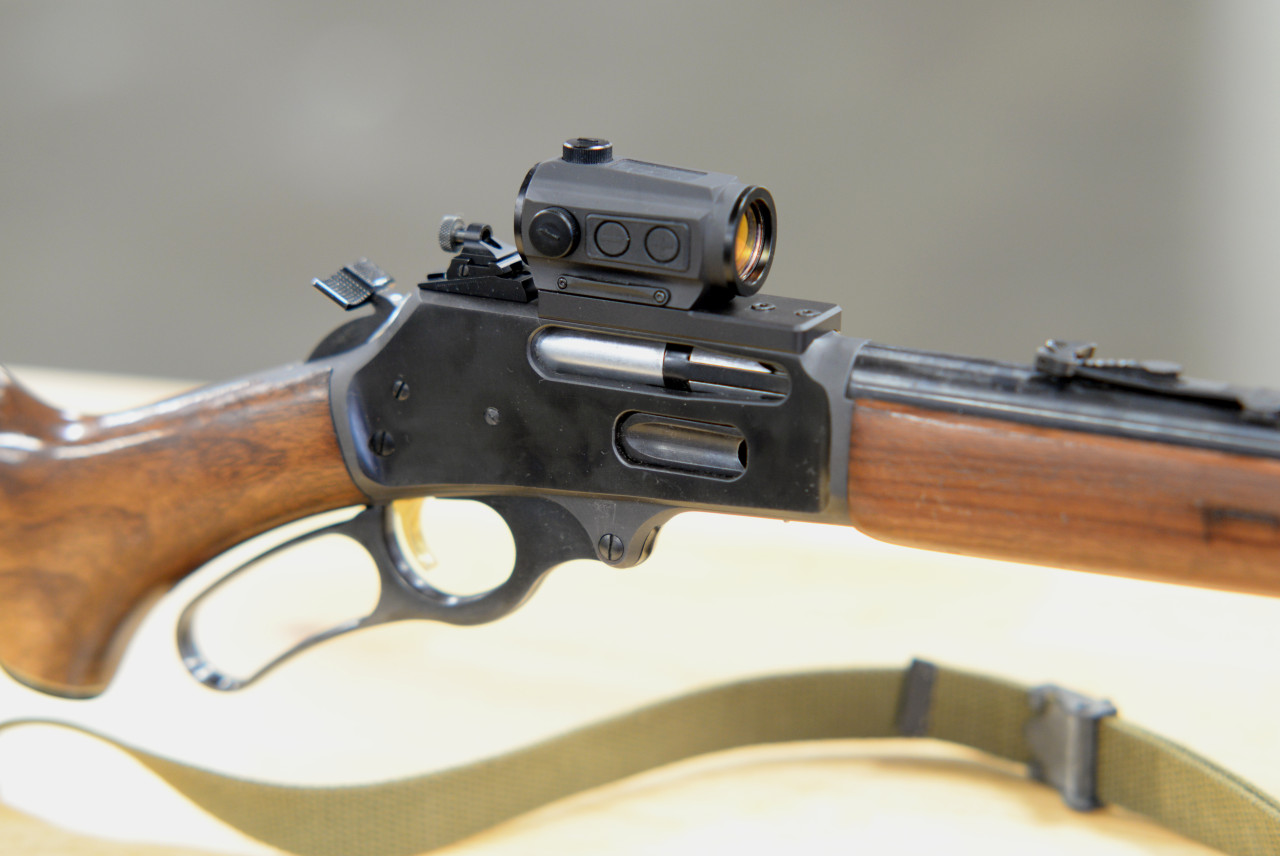Blocks on blocks. I've coined this term, I think, to refer to how people will put a picatinny rail on top of a rifle to attach a red dot using a generic mount. Simply put, the Picatinny Standard 1913 rail allows for a universal mounting point but it's very blocky and can lead to excess components when mounting certain aiming devices. I personally believe that a picatinny rail can ruin the aesthetic of a firearm quickly. On some guns, like the AR-15, the picatinny rail can give the rifle a great industrial or modern look but on something like a lever action rifle, you can lose the magic of the classic look very quickly. In the video below, you have a prime example of the phrase blocks on blocks.
There are better ways than slapping a picatinny rail onto of a rifle and ruining the aesthetic. As an example, in the above video, the red dot is probably about 2 inches over the bore. This is because Henry put a section of picatinny rail on top of the receiver for expediency. They probably just wanted to put a red dot on this particular rifle as a demo. Then they used the picatinny mount for the red dot. You have 2 layers of material on the rifle between the receiver and the red dot. By using a dedicated mount, you remove the extra and unnecessary layers of material saving height and weight.
To fix this excess materials issue, we can use a dedicated mount for the red dot we want to use. Many companies make dedicated mounts for popular red dots and popular firearms. If you spend some time on Google, you can find what you are looking for most likely. There are mounts for RMRs, Fastfires and even Aimpoint's Micro like the T1. This also applies to scopes. Here's a great example of a low profile, dedicated mount from Phoenix Weaponry. In the picture below, using this mount, the red dot is attached without the extra layer of the picatinny rail plus the mount for the red dot. You have the receiver, the mount then the dot.
In the three pictures below, you can see the first, second and third iteration of my Marlin 1894. In the pictures, none of the mounts used are picatinny. The optics are using a dedicated mount for the specific optic deployed. First is the 336 mount for the Burris Fastfire 3. The second photo is of the SIG Romeo5 using the Midwest Industries T1 mount with integrated open sights. The third photo is the short-lived Leupold FX-II 2.5x scope with an Ashely Performance low profile scope mount for the 336 and 1895.
Depending on the situation, you can use the same mount for different guns if they have the same hole pattern. I used the Burris Fastfire 3 mount for the 336 and 1895 on my Marlin 1894 until Midwest Industries came out with their T1 mount. Then used that same 336 mount and Fastfire on the Henry Homesteader for a while. The Burris mount is for the 336 and 1895 rifles made by Marlin but because it only uses two of the holes, you're able to use the mount on either the front or the back pair of the scope holes. Since the distance between either pair of holes is the same (half inch), you can use the 2-hole mounts for the 336 and 1895 on the 1894 and Henry guns. The Weaver 63B mount pattern is what the 336 and 1895 use so many of those 2-hole mounts are compatible with the larger Henry receivers. That includes the likes of the Homesteader, the 45-70, 30-30 and 410 versions of their lever action guns. The smaller guns like the Big Boy rifles use a different, 3-hole pattern but the rear holes are still half inch. That will let you use the Burris mount if you wanted to use a Fastfire on your Henry BigBoy.
The Homesteader as stated above is capable of hosting the same 2-hole mounts as the Marlin 336 and 1895. In my case, the Burris 336 mount hosted the Fast Fire 3 for a while. It was very low profile and I think looks pretty good. It's clean and simple.
The Ashley Performance 1895 / 336 mount also fit nicely. I harvested the FX-II that was on ProjectGranjero for what I think will be a permanent installment on the Homesteader. I do suffer from a case of Can't Leave Things Alone so it's possible the Homesteader can change.
I had briefly considered using Farrow Tech's Red Dot Mounting Plate on the Homesteader and harvesting the SIG Romeo5 from the T1 mount. See the picture below where FT has their mount on Marlin. I'd be willing to bet, that mount would work for the 1894 since it only uses the front two holes.
In summary, you don't need to use picatinny rails on everything just to mount an optic. Use picatinny rails where it makes sense or at least looks good or if that's all you can use. If you look around, you can find mounts that you can use for your scopes and red dots to keep things low profile and clean.










No comments:
Post a Comment